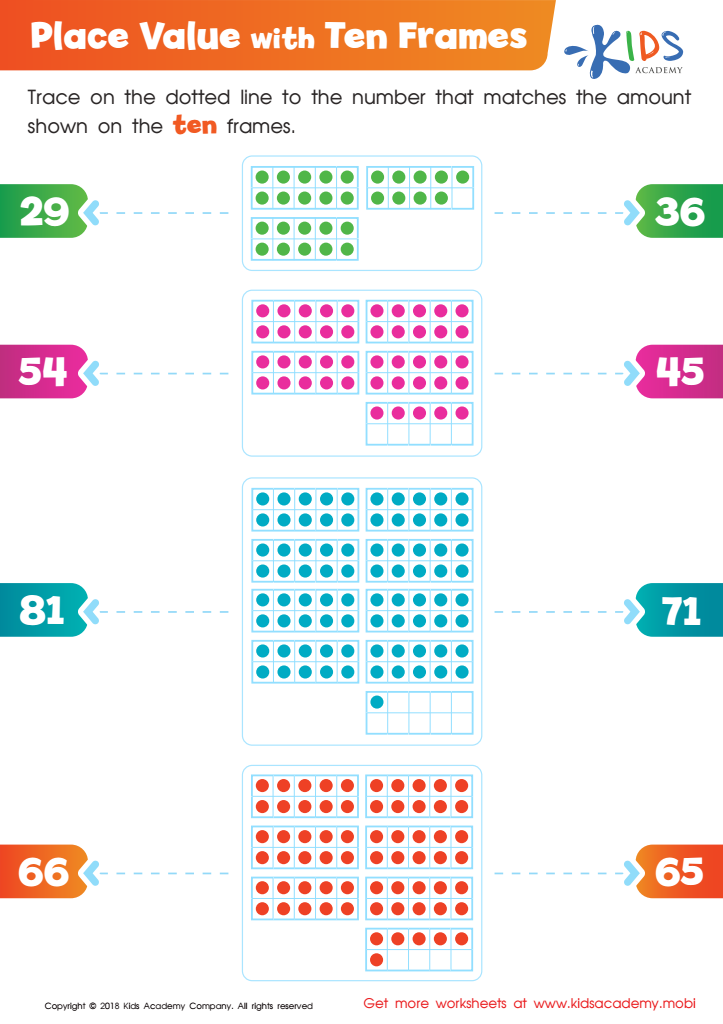Visual representation learning Worksheets for Kids
1 filtered results
-
From - To


Place Values with Ten Frames Worksheet
Question/Answer
What are some effective activities to train students’ Visual representation learning skill when teaching them about Numbers?
Effective activities include using manipulatives like blocks or beads for counting and grouping, creating number lines for visualizing sequence and operations, drawing pie charts or bar graphs for fractions and percentages, employing flashcards for rapid recognition of numbers and symbols, and incorporating puzzles or games that require matching or sorting numbers and shapes to reinforce spatial and quantitative relationships.
How to test a Grade 1 student’s Visual representation learning skills?
To test a Grade 1 student’s visual representation learning skills, use age-appropriate activities that require them to interpret and create visual information. This could include asking them to match pictures with words, sequence story pictures, use simple graphs or charts, draw a response to a story, or identify patterns and shapes.
Why is the Visual representation learning skill important for Grade 1 students?
Visual representation learning skill is crucial for Grade 1 students because it enhances their ability to comprehend and retain information. It aids in developing critical thinking, problem-solving skills, and understanding complex concepts by breaking them down into simpler, visual forms. This foundational skill also supports literacy and numeracy development, making learning more engaging and accessible for young learners.
 Assign to the classroom
Assign to the classroom











